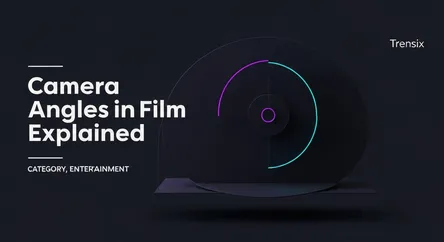Entertainment
Camera Angles in Film Explained

Discover how camera angles shape storytelling. Learn how high-angle, low-angle, and other shots create emotional and psychological impact in movies.
What is it?
A camera angle is the specific position and viewpoint from which a camera captures a subject or scene in filmmaking. It's a fundamental element of cinematography used to convey narrative information, mood, and character dynamics. Common angles include the eye-level shot, which mimics a neutral human perspective; the high-angle shot, looking down on a subject to make them seem small or vulnerable; and the low-angle shot, looking up to make a subject appear powerful or dominant. Other key types are the bird's-eye view (directly overhead) and the Dutch angle (tilted), which creates a sense of unease or disorientation. Each choice is a deliberate artistic decision.
Why is it trending?
Discussions about camera angles are trending as audiences become more cinematically literate. With the rise of video essays and analysis on platforms like YouTube and TikTok, viewers are actively dissecting scenes to understand the director's craft. This deeper appreciation for filmmaking has turned passive viewing into an active analysis of how storytelling is visually constructed. Aspiring filmmakers and content creators are also driving this trend, seeking to master these techniques to improve their own work, making educational content on the topic highly popular.
How does it affect people?
Camera angles have a profound psychological effect on the audience. By manipulating perspective, a director can subconsciously influence how viewers perceive a character or situation. A low-angle shot of a villain instills a sense of intimidation, while a high-angle shot of a hero in peril evokes empathy and a feeling of their vulnerability. An eye-level shot can create a direct, personal connection. This visual language guides emotional responses, builds suspense, and establishes power dynamics, making it one of the most powerful and subtle tools in a filmmaker's arsenal to shape the audience's experience.